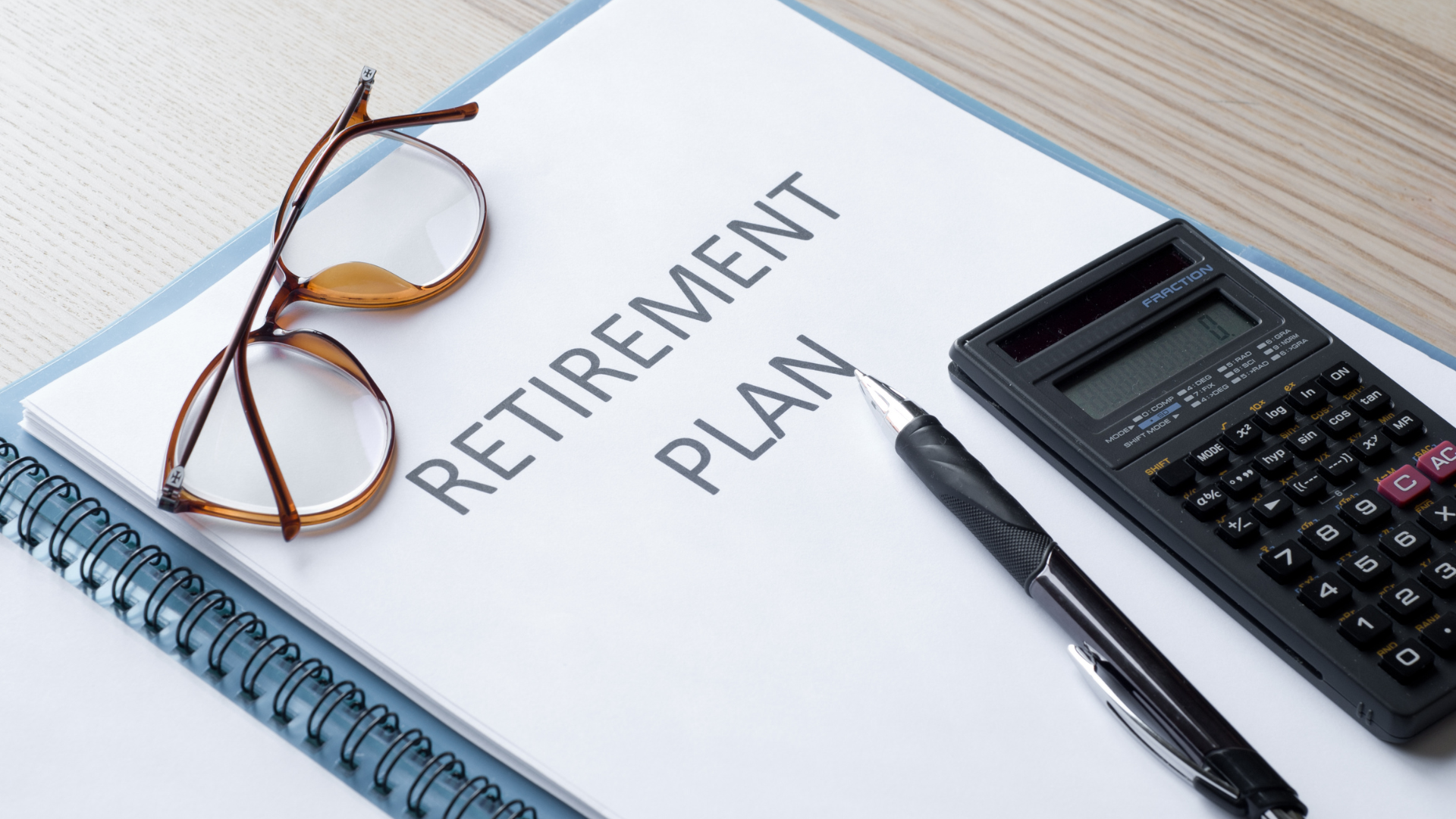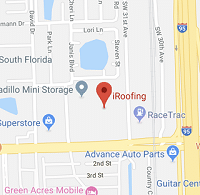How do you want to spend your retirement? Do you plan to travel? Are you looking forward to more time with family and friends? No matter what your roofer retirement goals are, the importance of planning for your future now cannot be overstated.
Market changes, politics, inflation, labor supply and demand, tax rates, natural resources — all these factors affect the economy, and they are all beyond your control. Taking the lead on things you can control, such as how you plan and save for retirement, can help ease the worry about all the forces at play.
As a roofing contractor, you have a lot on your mind: The safety of your employees, generating new business, paying suppliers, and the reputation of your company are all priorities. How to retire as a roofer is another topic that must be high on your list. Roofing is a physically demanding career that can’t be done forever. The average age of an employed roofer is 36 years old — a good time to create a financial plan for retirement.
Understanding the Retirement Landscape for Roofers
As a roofing contractor, you are most likely to be a small employer with 50 to 100 employees. You probably work in private industry, as opposed to the public sector. And you’re not likely to be unionized. All these factors mean that you probably don’t have a funded pension like those enjoyed by public sector workers. This means you have to establish a retirement fund for yourself and your employees if you want them to have this benefit.

Challenges Faced by Roofers Saving for Retirement
This leads to another quandary. Many roofing contractors have come up through the ranks. That is, you probably worked as a roofer, becoming proficient in all the areas of knowledge required to do the job well and safely. It’s likely that once you became a supervisor, you decided to start your own company. At the time you started your business, you had a lot of competing demands: getting work, paying crew members, and possibly supporting a family. You may not have had support from banks and instead used credit cards or home equity loans to buy equipment and supplies. This didn’t leave you a lot of time, money, or mental energy to think about retirement plans.
So, what are your options?
Rely on Social Security Benefits
Periodic debates over the health of this system may not give you the peace of mind you want in a retirement plan. Talk of raising the retirement age to give the system more longevity doesn’t help because roofing takes a toll on your body, and you’re not likely to be roofing at age 72.

Create an Employer-Sponsored Retirement Plan
Create an Individual Retirement Account (IRA) for Yourself
In this case, you would establish a retirement plan for yourself. To establish an IRA for yourself, you need to decide where (bank or other financial institution) you want your investment to be. Then you open an account and fund your investment. You will choose an amount you can prioritize putting into your account on a defined timeline, like a monthly contribution.
Strategies for Saving and Investing as a Roofer
Challenges aside, it is possible for you to establish a healthy retirement plan. The first steps to take are establishing your goals and creating a budget.
Establishing Your Goals
Creating a Budget
It’s not that easy to create a budget for your future, with inflation and economic ups and downs. However, you can start by using your current budget as a jumping-off point. If you don’t have a current budget, now is the time to put one together and give it a test run to see if it’s realistic. Try sticking to it for a couple of months. Once you have your current budget established, you can look at line items that may be lower in retirement, like clothes and gas. Other items may go up, like airfare or healthcare.
Maximizing Your Dollars
If you are a roofing employee and your employer has a retirement plan, you definitely want to maximize your contributions to it, even if your retirement is a long way off. Essential elements of a solid plan include discipline, sacrifice, and consistency. Does your employer offer a 401(k), 403(b), or other plan? Do they match contributions? If so, take advantage of the matching funds — it’s free money!
Providing Retirement Savings to Your Employees
As a roofing contractor, you have to decide whether you’re going to offer a plan to your employees. It’s unusual for a roofer to stay with one company for more than just a couple of years. One way to keep your best employees is to offer them benefits they can’t get somewhere else.
The other way to go if you don’t have employees is to establish a self-employed retirement plan, like a simplified employee pension (SEP) IRA or individual 401(k).
Determining Your Investments
Diversifying Your Portfolio
It’s important that you diversify your portfolio so you have a solid mix of growth and safety at the right time in your long-term plan. For example, while stocks offer the opportunity for growth, they also come with more risk. So, while you have time, you want to invest more in stocks to give yourself that opportunity for significant growth. As you mature, you want to shift to more secure bonds and/or cash equivalents like certificates of deposit (CDs). The downside of these safer investments is there is a risk your account won’t grow at the same rate as inflation.
Mutual funds are a way to diversify your portfolio without a lot of intercedence on your part because they are designed to have a mix of investments and are managed by a professional. You can have a stock mutual fund that invests your money across a range of companies like energy, technology, pharmaceutical, etc. Or you can choose a fund that invests your money in the safer areas of bonds, cash equivalents, etc. Or you can have a mix with, say, 70% in stocks and 30% in mutual funds. If your stocks grow to a point where you are no longer in your 70/30 ratio, the fund is automatically rebalanced.
Don’t Forget Taxes
And don’t forget taxes. An IRA allows you to contribute pre-tax dollars to your account and taxes you when you take the money out. But what if you haven’t hit your peak earning years yet, and right now, you’re taxed at, say, 12%? If you’re taxed at a higher rate in the future, this option might not make sense. A Roth IRA taxes you when you put the money in but doesn’t tax you when you take it out, nor is the growth in your account taxed. This might be a good option if you’re being taxed at a lower rate now and expect to be taxed at a higher rate later as your earnings increase.

Retirement Planning Tips for Roofers
Another benefit of starting early with saving for roofers is taking advantage of compound interest. Compound interest is interest calculated on the sum of the initial amount of investment plus any interest already accumulated. Since compound interest generates “interest on interest,” it makes a sum grow faster than simple interest.
When you invest, compound interest adds any interest you earn to the beginning principal and reinvests it rather than paying it out. Interest is then earned on the new higher balance, reinvested again, and so on. So, of course, the more time your investment has to grow, the bigger the impact of compounding.
What to do if You’re Starting Late
If you’re starting late with your IRA, one thing you can take advantage of is catch-up payments. Most IRAs have a cap on how much you can contribute, but catch-up payments allow those over 50 years old to make additional investments beyond the cap.
Other options to consider for those starting late (or even those starting early) are to invest in other ventures, like real estate or building a side business. Every way you can invest your money that brings a fairly high rate of return comes with risk. You have to do your research and know what you’re comfortable with. Real estate has historically been considered a good investment, but today’s housing market is more volatile. Whether or not real estate is a solid strategy depends on the economy and the housing market in the area you’re looking to invest in.
Building a side business requires time and energy. Whether this is a viable option for you depends on what stage of your career you’re in. Are you working constantly, with a few weekends off? Or is your business slower? Think about something you can build in the time you’re not focused on roofing work, and be sure it’s something you can sustain in your golden years.
Using a Financial Planner
Creating Retirement Plans for Roofing Company Employees
If you’ve decided you want your employees to have retirement benefits, you can do this in four steps, but you will probably need the help of an accounting/tax professional. The steps are:
- Create a 401(k) plan document that complies with the IRS Code and outlines the details of your retirement plan
- Set up a trust to hold the plan assets
- Maintain records of 401(k) employee contributions and values
- Provide information to your employees
Matching Contributions
What about offering matching contributions? This is where you would match the contributions your employees invest in their accounts. For example, if your employee puts five percent toward their retirement fund, you would match that five percent with funds coming from your business.
You will need to do a financial assessment of your company to see if this is feasible and whether it’s sustainable for the long term. You will also be responsible for ensuring the plan complies with applicable laws, and you’re meeting your fiduciary responsibilities. A fiduciary is someone who manages property or money on behalf of someone else. You will become a fiduciary if you manage your employee retirement fund. As a fiduciary, the law requires you to manage those assets for your employees’ benefit — not your own. If you don’t want to take on this serious obligation, you can work with a financial professional who would manage the account on your employees’ behalf.
Additional Resources and Tools for Roofers
There are plenty of tools you can use, like retirement planning calculators, to help you figure out how much money you need to save for your retirement. Some additional reading may also be helpful. Check out the following:
- “Retirement Strategies for Self-Employed Individuals” – Roofing Today Magazine
- “Tips for Roofers on Saving for Retirement” – Roofers Digest
- “Choosing the Right Retirement Plan for Your Roofing Business” – Roofing Contractor Magazine
You will need to do a financial assessment of your company to see if this is feasible and whether it’s sustainable for the long term. You will also be responsible for ensuring the plan complies with applicable laws, and you’re meeting your fiduciary responsibilities. A fiduciary is someone who manages property or money on behalf of someone else. You will become a fiduciary if you manage your employee retirement fund. As a fiduciary, the law requires you to manage those assets for your employees’ benefit — not your own. If you don’t want to take on this serious obligation, you can work with a financial professional who would manage the account on your employees’ behalf.
Frequently Asked Questions Roofers Ask About Retirement
How Can I Start Early and Save Consistently? The power of compounding interest is a game-changer when it comes to building a retirement nest egg. By starting to save early in your career and consistently contributing to a retirement fund or 401(k), you can take advantage of time to grow your savings substantially.
How Can I Diversify My Investments? Roofers, like many self-employed individuals, may not have access to traditional employer-sponsored retirement plans. In such cases, consider diversifying your investments in stocks, bonds, and real estate to spread risk and potentially increase your returns over time.
How Can I Explore Tax-Advantaged Retirement Accounts? Take advantage of retirement accounts that offer tax benefits, such as Traditional IRAs or Roth IRAs. These accounts can help reduce your tax liability while growing your retirement savings.
Conclusion
No matter which direction you choose to go — either a plan for yourself or a plan for yourself and your employees — the most important element is the planning itself. Use the tips in this article to get going, including:
- Getting started now!
- Setting your goals.
- Creating a budget.
- Determining the kind of retirement savings plan that best suits your needs.
- Funding the plan.
- Maintaining discipline and consistency.
By getting started now, you will ensure that your retirement is not made up of dreams and wishes but attainable goals you are working toward and will be ready for. So go ahead and put those trips on your to-do list. Get ready to tango. And look forward to spending extra time with your family and friends. You deserve a happy and healthy retirement, and the first step toward it can be taken today.













